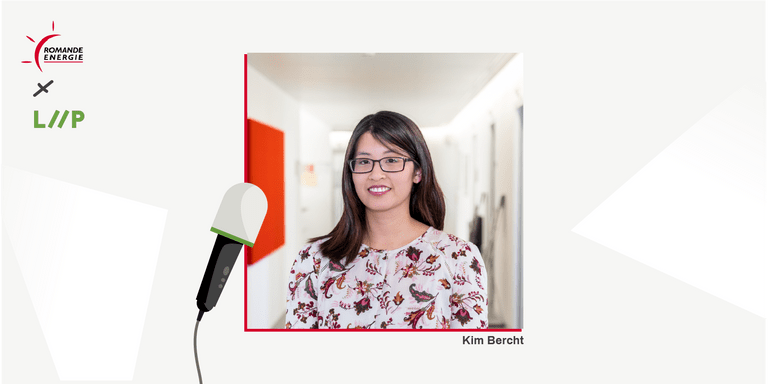Kim Bercht, as an Experience Designer and Product Owner at Romande Energie, why did you get in touch with us? What challenges had to be overcome?
We contacted Liip as part of the project to redesign our client area. At the time, we faced several challenges. We wanted to:
- Include the client in a co-creative approach in developing a client area that met their needs as effectively as possible
- Regain control of our apps and develop them independently without having to rely on an external partner
- Set up a new technical architecture that is both modern and flexible
- Speed up the development and delivery of new functions using an agile approach
- Train our development teams to deliver a first version of the client area within a very short time frame
Why did you choose Liip to help Romande Energie? What elements played a role in making your choice?
For our first project to be developed using an agile approach, we needed a partner that could help us build our online platform whilst also supporting us to learn the Scrum methodology.
Being experts in this methodology, Liip was also able to pass these skills on to our teams. You coached us as we learned how to take on the roles of Scrum Master and Product Owner. You also taught those involved in the project all about how agility works. This all-round support was extremely beneficial for us.
In addition, you supported our internal developers to learn and get started with new technologies and still do so. Liip also temporarily bolstered the Romande Energie team, which initially consisted of just two developers.
How did your first agile project go for you? What were the initial results?
Our first sprints were very intense. We had to familiarise ourselves with the Scrum methodology and our respective roles, set up project monitoring tools, finalise our technology stack choice, and line up the first functions to be developed. And not to forget ensuring a good team spirit when the first lockdown arrived.
Given the challenges scale to be tackled, which went well beyond the client area redesign itself, we felt somewhat discouraged at the beginning of the project. Agile work requires a complete change of mindset. Contrary to what you might think, agility needs a great deal of discipline.
Adopting this methodology enabled us to focus on one problem at a time and not spread our efforts too thin. After ten sprints, we had sorted out the major bottlenecks and were progressing at a good pace with a better understanding of our roles. I want to point out that our team could solve every problem that came along and remained motivated despite working from home.
Agility requires us to be completely transparent and open across the team, enabling us to question our approach more frequently and ensure there is an ongoing improvement. A clear benefit of this methodology!
During the first sprints, we realised that creating a new client area has raised issues beyond improving the user experience for clients. How did you manage these additional challenges? How has Liip’s involvement helped you?
The project’s scope evolved to incorporate changes to our platform’s technical architecture by boosting the security of our customer data, and improving the integration into Romande Energie’s online ecosystem.
To prepare for the sprints in the best way possible, we had to revise our internal organisation so that we could integrate our technical SAP provider. This resulted in a significant amount of extra work in terms of analysis, development and coordination.
In my role as the Product Owner in this project, this represented an additional level of complexity that I was not familiar with, given that I am not a developer myself. We therefore had to prioritise purely technical developments so that we could implement the first functions that would offer tangible value for our end users.
Thanks to my exchanges with Thierry, my Product Owner coach in this project, I was able to gain new skills that enabled me to overcome these challenges. I am now much more autonomous in decision-making and prioritising my tasks.
Can you give us an example that best illustrates Liip’s agile approach to work?
I have three. You were able to:
- Adapt the project as we went along to meet Romande Energie's additional technical requirements.
- Shape a clear vision of the features we would offer our clients, and prioritise their deployment.
- Integrate and train a new developer for the Romande Energie internal team in record time.
When you look back on your journey today, what do you think you will take away from this adventure? Would you do anything differently?
I was impressed by the quantity and quality of the work completed by the entire team. At Romande Energie, we started from scratch when introducing new technologies and a new working methodology (agility).
We were able to establish a strong team spirit during sprints. Agility also enabled us to continually find areas where we could improve, even after ten sprints!
I would do differently by undertaking less preparation and detailed work in advance on the functions to be implemented. It is important to have a vision of the elements that need to be developed during the next sprint, but no more than that. The project naturally adapts to changing requirements. If you plan too far ahead, you run the risk of reworking the same elements multiple times, thus of not making optimum use of your time.
And finally, how would you describe your collaboration with Liip in three words?
Supportive, kind and sympathetic!

